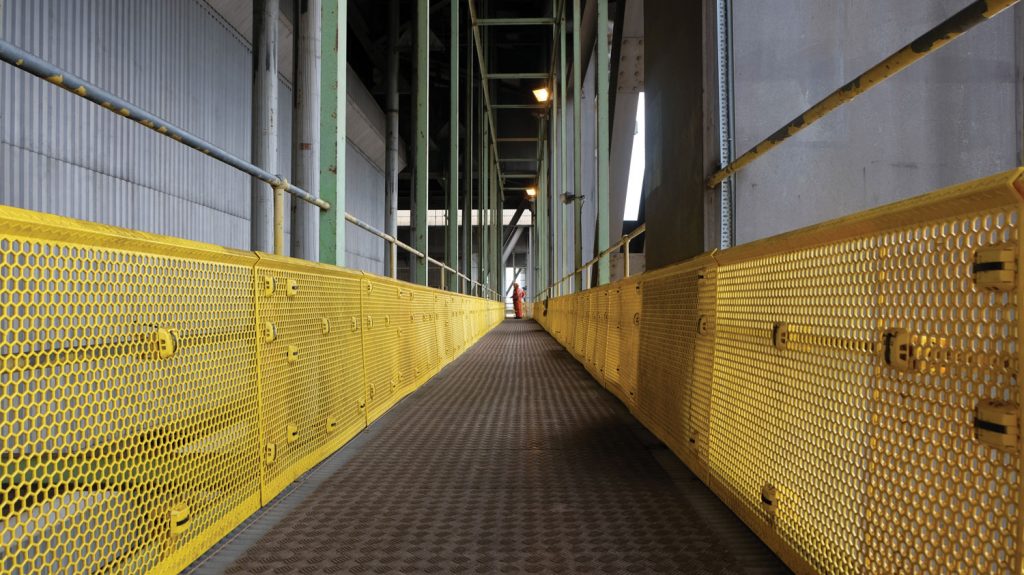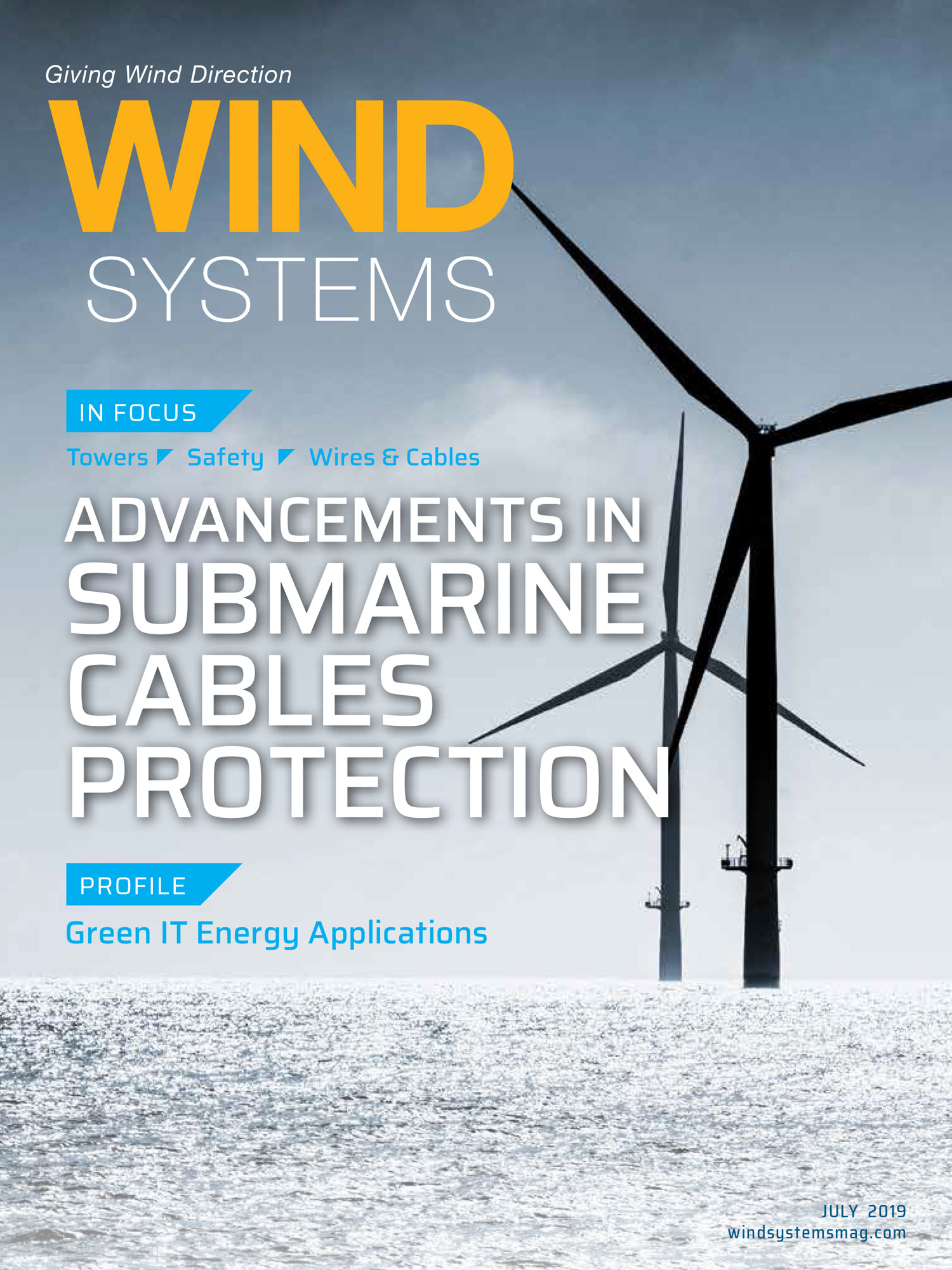What are your responsibilities at Dropsafe?
As commercial director of Dropsafe, my responsibilities include helping raise awareness of the risks that dropped objects (DOs) pose and supporting our customers’ initiatives to mitigate these risks.
Furthermore, I am responsible for developing our distribution network that allows customers to purchase Dropsafe products in the most efficient and cost-effective way.
What types of products does Dropsafe provide for the wind-energy market?
The Dropsafe product range is made up of robust, versatile DO prevention solutions including a variety of specialized nets and barriers.
Dropsafe Nets securely enclose and tether overhead fixtures such as lights, speakers, and CCTV cameras to prevent DOs falling from height and threatening the safety of personnel.
Dropsafe has recently been contracted to provide 42 Dropsafe Nets to Swancor Renewables’ Formosa 1 wind farm in Taiwan. On completion of construction, Formosa 1 will be Taiwan’s first commercial-scale offshore wind project. The wind farm will have Dropsafe’s DO prevention technology installed across all 20 of the Siemens-Gamesa turbines on site.
The Dropsafe Barrier consists of robust high-grade polymer panels that are clipped along the inside of guard railing such as those found on landing platforms around turbine towers, using a universal attachment system. The solution has been engineered to tackle many of the common challenges experienced in harsh offshore environments, including increased corrosion resistance.
The barrier system has gone through three years of development, involving extensive analysis, wind tunnel testing and third-party validation and certification.
At the time of writing, it is the only DO barrier to have achieved Type Approval from the American Bureau of Shipping (ABS) under the DOPP+ certification scheme.
The Dropsafe Pouch is a proven solution to preventing handheld object drops. The stainless-steel mesh pouch can secure items and be attached to an engineer working at height. For example, the Dropsafe Pouch can tether a rotor blade maintenance technician’s laminating tool to their PPE when conducting blade-erosion repairs.
Dropsafe’s solutions can significantly reduce or eliminate DO risks, providing a potentially life-saving back-up in case of disaster.
Why is it important to address the risk of dropped objects in the wind industry?
The risk posed to the wind industry by DOs covers four main areas: personnel safety, equipment integrity, finances, and reputation. The safety risks involved in such incidences are clear: Objects falling from height endanger lives — they can seriously injure personnel working directly below and could cause fatality.
In terms of the financial risk, it is difficult to accurately assess the cost to businesses of individual incidences of DO. Little formal research has been completed on this topic and, as with reputational risk, it is not in the interest of the companies involved to divulge such information.
It is clear, however, that injuries to personnel cost the company financially through working days lost, and falling objects risk damaging equipment. This could lead not only to the cost of replacing the damaged assets, but also a need to temporarily suspend some operations at the wind farm, which would, in turn, have a significant financial impact. Furthermore, there are potential financial compensation implications and the legal consequences that go hand-in-hand with them.
While all of the major reported DO events that have occurred to date in offshore wind have related to heavy lifting, without risk mitigation action being taken now by offshore wind companies, it is only a matter of time before a significant DO incident occurs in the industry.

What unseen long-term costs do businesses face when it comes to the procurement of health and safety equipment?
Cost remains an important consideration for buyers of HSE systems. This means that it can be easy for HSE decision makers to seek a short-term fix for a long-term challenge by adopting the product with the lowest upfront cost.
While this approach may reduce immediate capital expenditure, it can have a knock-on effect on long-term operational costs. It is important, therefore, not to look at the initial equipment purchase and installation costs in isolation, but to consider the cumulative costs of using the DO-prevention product over a given period.
Installation is a key constituent of the total lifetime cost of using a barrier, particularly if the system is set to be removed or reinstalled. Understanding this cost should be a critical part of procurement decision making.
Knowing how long a barrier system can withstand the elements, particularly in offshore applications, is also essential to understanding the impact of long-term maintenance costs on HSE budgets. The duration of manufacturer warranties is an indication of how long the product can be safely used.
It is also important to take into account missed revenues incurred as a result of turbine downtime. In sectors such as wind energy, where availability is a core metric, the cost of downtime may far outweigh equipment, installation, and maintenance costs.
The problem is that, while there is slow progress toward standardization of DO prevention mechanisms across industries, HSE decision makers often lack a clear benchmark for assessing the quality and lifetime cost of the available options. It can be difficult to answer the question: ‘How much should I be spending on DO mitigation?’
More transparency is needed to support informed procurement and empower HSE decision makers to adopt innovative and cost-effective solutions that not only ‘do the job,’ but deliver long-term value.
What are the potential dangers when businesses only focus on short-term solutions?
DOs are not the only on-site risk at offshore wind projects. Given their finite budgets, HSE decision makers in offshore wind must choose solutions that are proven to demonstrate long-term cost efficiency.
Lessons can be learned from the offshore oil & gas sector, where compromises have historically been made in DO prevention. Lower-quality, “quick-fix” solutions have sometimes been adopted that either do not stand up to the offshore environment or do not constitute a robust defense against DOs — or both.
It is important that, in offshore wind, the lifetime costs of DO mitigation solutions are made transparent so long-term HSE decisions can be made, and the risks involved with adopting low quality solutions are avoided.
How is Dropsafe addressing this challenge?
Dropsafe’s latest whitepaper “Slipping Through the Cracks” was developed in response to the lack of transparency in long-term health and safety equipment costs. The whitepaper looks in depth at one particular DO prevention technology — the barrier.
In “Slipping Through the Cracks,” Dropsafe provides an honest assessment of how the Dropsafe Barrier stacks up against the other most commonly used solutions in the market. This is done by looking at upfront cost, quality, and long-term maintenance requirements. In doing so, we aim not to show “you can’t put a price on safety,” but rather that cost shouldn’t be a barrier to an effective DO mitigation strategy.
Dropsafe also continues to work with developers and operators in the wind-energy industry to develop the most advanced technology and quality manufacturing processes without sacrificing value and cost efficiency.
How do leading barrier solutions in the market stack up against each other in terms of upfront cost, quality, and long-term maintenance requirements?
The most commonly adopted barriers used in offshore applications worldwide include, at one end of the spectrum, low-grade flexible mesh netting, and at the other, advanced polymer barrier systems such as the Dropsafe Barrier. Bolted metal fencing and expanded metal barriers are also widely used.
It was found that more advanced systems such as the Dropsafe Barrier, while they may have higher upfront material costs, have substantially lower installation costs due to ease of attachment. While many other products on the market will require partial or full replacement during a five-year period, products guaranteed under warranty to last for the full five years without replacement ultimately have the lowest maintenance and reinstallation costs. This therefore makes them more cost-effective than lower-grade solutions.
Is there a move to standardize safety measures? If so, will that be enough, or will more regulations be needed?
To date there remains a lack of standardization when it comes to recommended DO prevention technology, and an absence of clear-cut regulation. Across multiple sectors, this has put the emphasis on leading wind-energy firms and their HSE decision makers to “self-regulate” with their use of DO prevention systems.
Organizations, including Drops.org and the American Bureau of Shipping (ABS), are making moves toward standardization of key technologies such as safety nets and barriers via schemes such as the ABS DOPP+ program. The ABS DOPP+ certification scheme verifies the manufacturing quality of the product and enables users to demonstrate a commitment to upholding the highest safety standards.
DO regulations are likely to come into effect in wind power in the near future as the risk is increasingly realized, but in the meantime, firms shouldn’t take the back seat and wait for legislation to guide HSE decision making. Wind-power companies have the opportunity to take a leadership stance and position themselves as health and safety market leaders. This can be achieved by proactively implementing a robust DO prevention strategy instead of waiting for standardization to be introduced.
More info www.dropsafe.com































